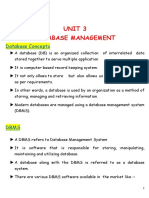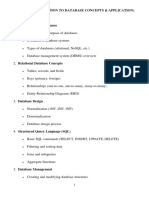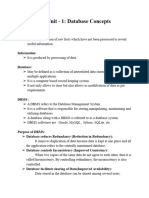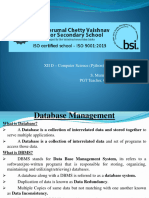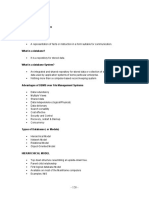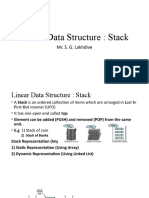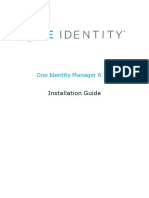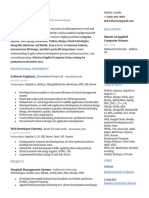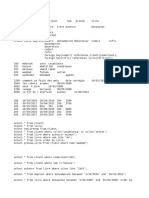0% found this document useful (0 votes)
6 views8 pagesChapter 12 Relational Database
class 12 relational database notes
Uploaded by
ipshitasaha1215Copyright
© © All Rights Reserved
We take content rights seriously. If you suspect this is your content, claim it here.
Available Formats
Download as PDF, TXT or read online on Scribd
0% found this document useful (0 votes)
6 views8 pagesChapter 12 Relational Database
class 12 relational database notes
Uploaded by
ipshitasaha1215Copyright
© © All Rights Reserved
We take content rights seriously. If you suspect this is your content, claim it here.
Available Formats
Download as PDF, TXT or read online on Scribd
/ 8





